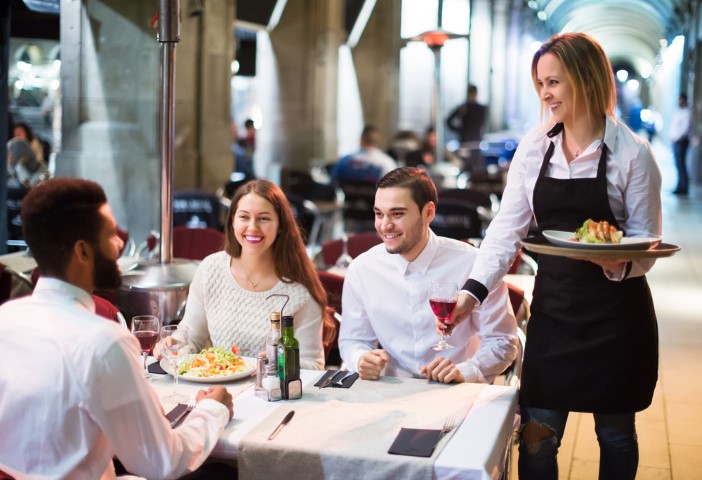My first job in Canada was a waiter, and I remember when tips were the most important part of my income. We were paid minimum wage, but the weekly wages were supplemented with the gratuity from customers. The gratuities were distributed and paid according to a set percentage for all the staff of the restaurant which included the kitchen staff and dinning-room staff.
Having had a job where gratuities made all the difference, I thought I was a generous tipper when leaving a 20% and 25% gratuity. I sometimes visit the same restaurants, where the Manager and waiters know me as a regular customer who leaves a good tip. I always receive excellent service and get the best table when reservations are required.
Payment at restaurants is usually made by credit card. With the old credit/payment machines, customers had to add the gratuity by amount. But now with the new programmable credit/payment machines, restaurants offer you options; you can pay a flat amount or a certain percentage for the gratuity, and many restaurants offer four options (i.e., 15%, 20%, 25%, or a manual entry).
The options offer the customer the convenience of deciding on the desired gratuity with the push of a button, but there is a catch; the vast majority of restaurants offer an ever-increasing percentage for gratuity and most of them calculate the percentage of gratuity after taxes, not before taxes. Very few customers notice this calculation. The result is that customers end up paying a gratuity on the tax collected for the government! Why on earth would customers pay a gratuity to the government?
In addition to this unethical programming of the machine, I discovered that the staff in many establishments do not get the service gratuity in its entirety, but instead the restaurant takes a specific ”cut” from the gratuity customers pay.
What a “sleezy” way to treat your customers and your employees! You make customers pay gratuity on the tax and don’t even give the entire gratuity to your employees.
Owners and Managers of restaurants reject my “sleaziness” description by saying that the machine offers an override where the customer can enter whatever they like or chose not to add a gratuity at all if they don’t like the given options. And regarding the distribution of the gratuity, by explaining the rules up-front when the Owner / Manager hires the staff, the employees can choose to accept or not accept the rules of the restaurant. They can simply decline or refuse to work.
Both answers are correct from a strict legal point of view, but for me they show a “shady way” of conducting business. Restaurant owners who engage in this behaviour treat their customers in a slimy way because they know most customers will not calculate how the percentage is arrived at, and they bully their own employees to accept rules that are fundamentally dishonest. Patrons want to reward staff for the service they receive. They don’t want to pay the Owner or the Manager extra.
Greediness is not a pillar for success in business. Aiming to exceed customers’ expectations, and respecting and rewarding your employees, are the pillars of success. I encourage you to reflect on my findings and hope you will agree with me in choosing wisely which restaurants to give your money to.


